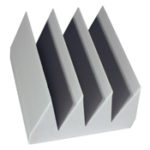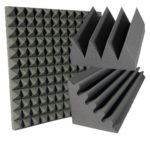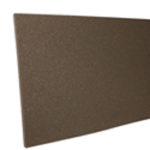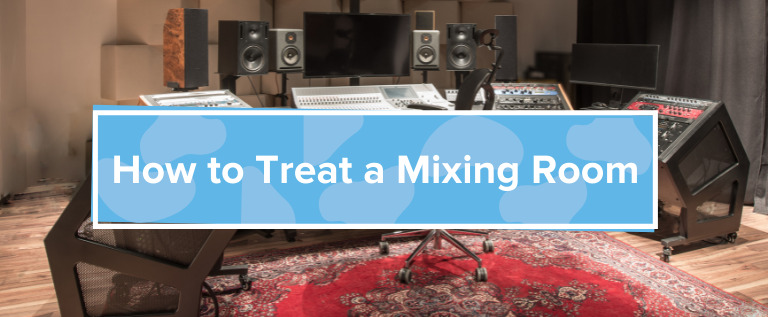
Musicians, audio engineers and creatives spend a great deal of time in home studios. No matter how much you spend on studio monitors, microphones and cables for the perfect setup, acoustic treatment for a mixing or mastering room is key to an incredible listening experience. You can make a few adjustments to your space for a significant difference in how you hear your next release.
Why It’s Important to Treat a Mixing Room
Rooms that sound amazing in their natural form are usually engineered for these results. Spaces within apartments, townhomes and other residential dwellings will rarely provide you with optimal sound without treatment. If you plan to record, mix or master audio tracks, you’ll want to control your environment to have a say in how sound travels in a room.
Sound waves move from studio monitors, amplifiers and instruments in all directions. The right acoustic treatments will reduce those sound reverberations for crystal clear playback.
Mixing Room Setup Ideas
All mixing and mastering rooms are different, so there is no one-size-fits-all approach for your setup. Start by placing your control desk and studio monitors along the wall farthest away from doors, windows and environmental noises. Ideally, your studio monitors will project toward the length of the room so that soundwaves have a longer path to surfaces behind you.
Set your monitors up so that your desk chair puts your ears in the tonal sweet spot. If you were to outline the distances between the speakers and your ears, your head should form the tip of a triangle. Once you’ve positioned your equipment, you can optimize your setup even more by adding acoustic treatments to the walls, ceiling and any right angles where hard surfaces meet.
How to Acoustically Treat a Mixing Room
Acoustic treatment for a mastering room might involve a mix of solutions. Here are a few treatments that can help you achieve a clear sound.
1. Bass Traps
Professional and DIY audio engineers position bass traps within the corners of a mixing room. Low frequencies in a recording can be difficult to hear without bass traps, as instruments like guitars, synths and drums reverberate from wall to wall. Placing foam corner traps at points where walls and ceilings meet will stop you from having to crank low-end frequencies just to hear them.
2. Acoustic Panels
Acoustic panels do an excellent job of deadening reflection points in your studio. Reflection points are common areas in which tones can bounce off hard surfaces. The purpose of acoustic panels is to reduce this effect so that the only mid- and high-range frequencies you hear are coming from the studio monitors.
3. Diffusers
If you have a large mixing room with open spaces and high ceilings, you may hear a lot of echoes. The easiest way to hear the true character of your studio monitors is to invest in acoustic diffusers. Hanging baffles are recommended for studios with angled ceilings and limited wall space.
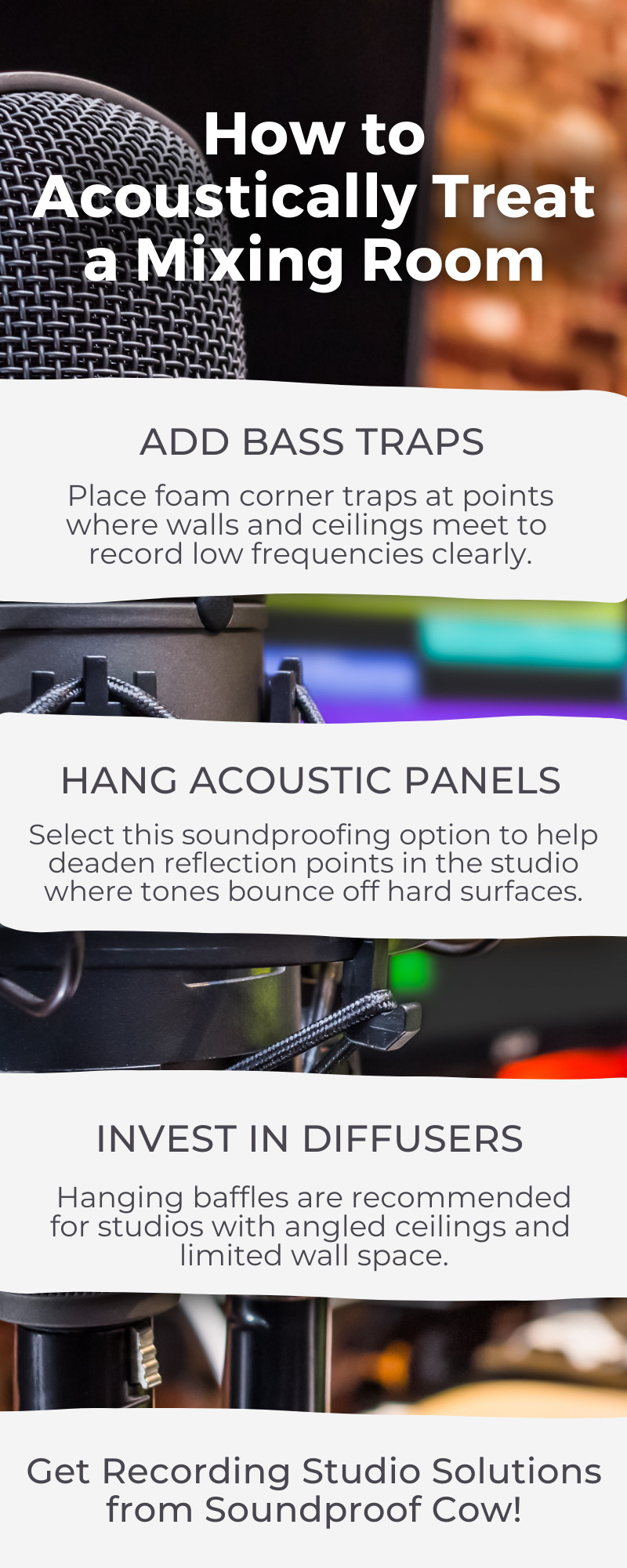
Purchase Acoustic Treatment Products From Soundproof Cow
Soundproof Cow designs acoustic treatment solutions ideal for your mixing room, vocal booth and beyond. Whether your studio calls for decorative acoustic panels or you’re interested in soundproofing parts of your home, we have what you need for immediate results. Contact us online to learn more!




